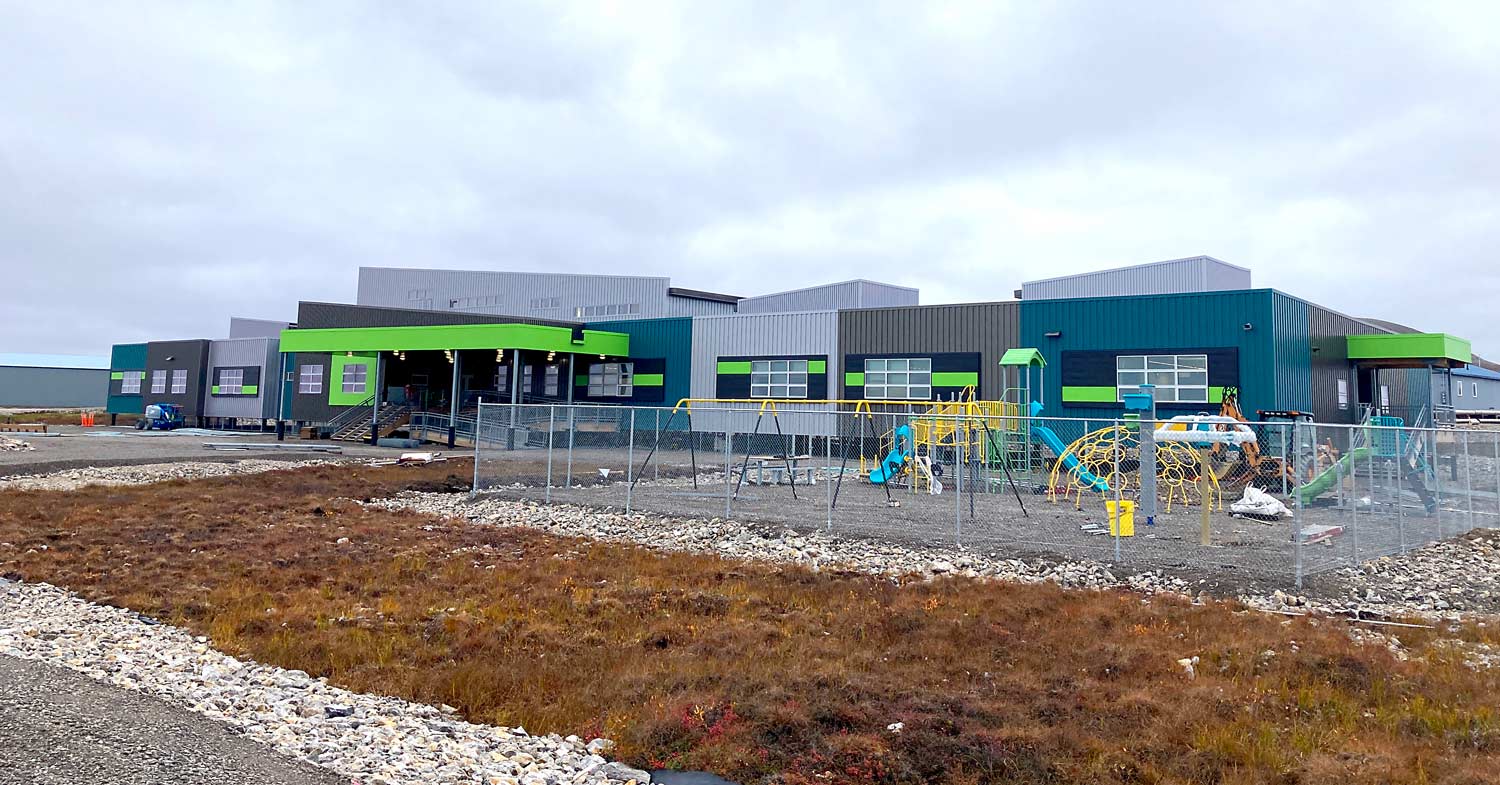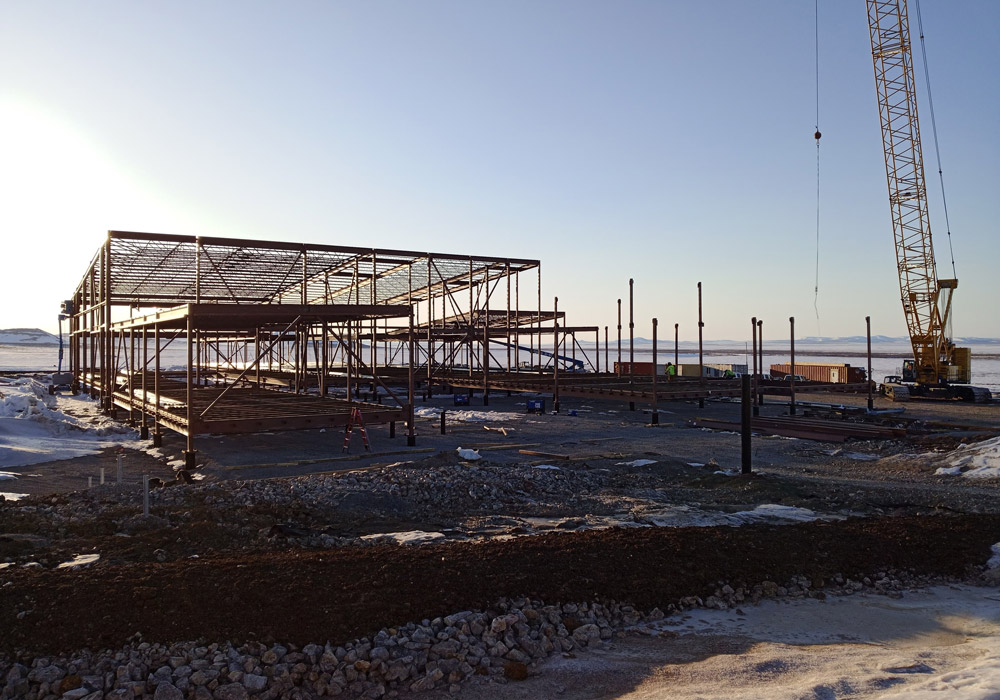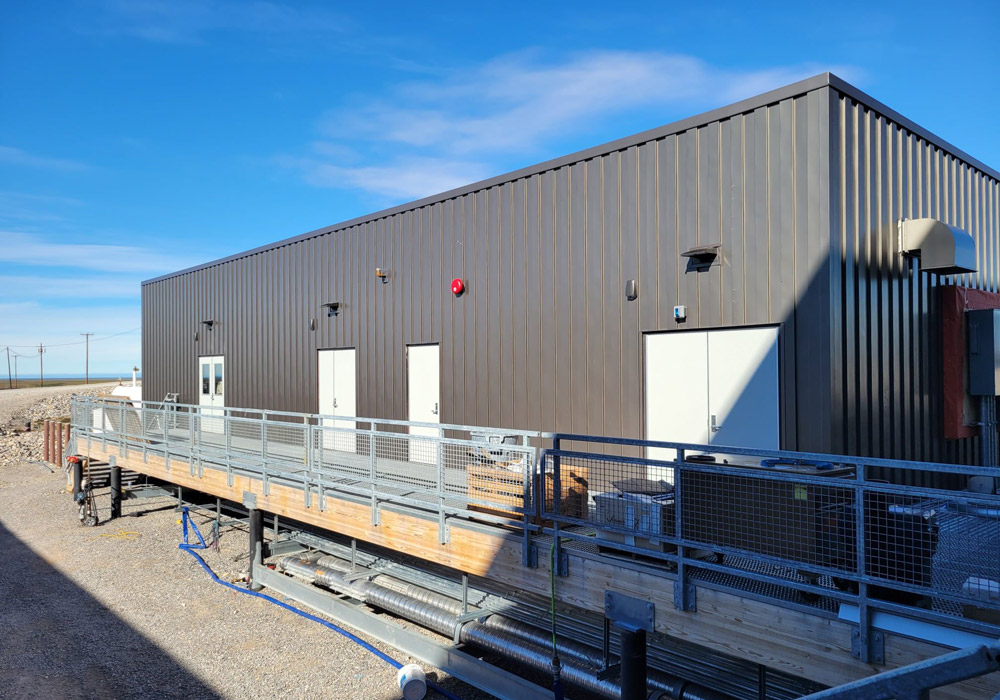

chool districts and construction crews across rural Alaska will be busy this year working on a variety of projects to renovate, repair, and in some cases replace school buildings. The projects, funded at least partially through the Alaska Department of Early Education and Development, or DEED, ensure students and teachers have a building that’s both safe and conducive to learning.
“We prioritize the projects that have the highest need, are the most squared-away in their process, and are ready for construction,” Willhoite explains. “It’s very objective and it’s not playing favorites. It’s ranking them very specifically.”
Facilities staff rank projects according to a defined set of criteria after meeting eligibility requirements. These include whether the district has a six-year capital improvement plan, whether it has a preventive maintenance and facility management program in place, among others.
“We look at very defined things, like do they have contracted design services, and are they keeping up with their maintenance,” Willhoite says. “Is this an emergency project? Is the building about to fall into the river or is it a roof replacement that needs repair? Those are the kinds of things we look at.”
Willhoite says DEED receives an average of 115 to 130 requests annually, but the number of projects funded depends on the legislature’s funding allocations. Some requests have remained on the list for years and have yet to receive funding. For those that are funded, Willhoite says that although DEED has statutory oversight throughout the project, he views the department’s role as more of an advocate for the districts.
“The districts have control of what they do,” he says. “We don’t have a heavy hand in terms of [what contractor] the money goes to. We provide a lot of review and a lot of suggestions that are based on experience and market needs. A lot of these districts don’t have that expertise, so we provide an extra layer of review and assistance.”
The $50.4 million project was awarded to ASRC SKW Eskimos, Inc., an Associated General Contractor, or AGC, of Alaska member company. The modern, 33,437-square-foot building will also serve as a facility for community events. The project included a 2,369-square-foot mechanical building, a 1,440-square-foot wastewater treatment facility, a 330,000-gallon water tank, and bulk fuel tanks.
The two-phase project began with the delivery of piling and steel packages to Kivalina in the fall of 2020 to coincide with the barge schedule, says Jeremiah Campbell, ASRC SKW Eskimos operations manager. The pilings and steel were installed between February and May 2021.
“From that time to the fall of 2022 is when we got to start with the actual building construction,” Campbell says. “I think somewhere in September or October [of 2021], we had the roof on the building. We used structural insulated panels for the walls and the roof, so that allowed us to get the entire exterior shell up and a completed roof with the roof covering on it before the snow flew in the fall of 2021, which was the only way we could have ever pulled that off.”
ASRC turned the school over to the school district in November, Campbell says. Crews will return in the spring to complete some “punch list work” before dismantling the camp and shipping the remaining equipment out on the June barge.
“There are always challenges working in the Arctic,” Campbell says with a laugh. “But nothing that would certainly be unexpected.”
The biggest was the logistics of getting equipment and crews to the remote Arctic village.
“Materials have to go through Anchorage to Kotzebue, then Kotzebue to Kivalina, so moving freight quickly is always a challenge up in that part of the world,” Campbell says.
ASRC was also responsible for maintaining the road leading to the school, and even with that maintenance snow and wind made for treacherous driving conditions in winter.
Water at the construction and camp site was another challenge. ASRC had to supply hundreds of thousands of gallons of water multiple times to the community water storage tanks and then truck that same amount up to the camp and the school throughout the project, Campbell says. ASRC built and maintained an ice road to haul water from the river, which was processed at Kivalina’s water treatment facility before filling the school’s water tank.
Despite the challenges, Campbell says the project generally went pretty smoothly.
“All in all, it was a great project,” he says. “I think it went really well. It’s a gorgeous school and the community should certainly be happy.”



Grant Fund for project: $1,679,510
Anticipated start date: November 2023
Grant Fund for project: $1,905,489
Anticipated bid date: February 2023
Estimated start date: Summer 2023
Estimated completion date: September 2024
Project description: Reconfigure office space and common areas to improve security. Bring restrooms into Americans with Disabilities Act, or ADA, compliance and install a new ventilation system, building controls, kitchen exhaust, fire alarms, and sprinklers
Grant Fund for project: $5,668,124
Anticipated bid date: February 2023
Estimated start date: Summer 2023
Estimated completion date: September 2024
Project description: Simplify school design to eliminate most stairs/ramps. Reconfigure offices and entryways and install new boilers, building controls, kitchen exhaust, fire alarms, and sprinklers.
Estimated start date: Spring 2023
Estimated completion date: Fall 2024
Project description: Reconfigure the existing facility to allow for the inclusion of a regulation-sized gym, modern kitchen, administrative office area, and functional classrooms. Includes 1,591-square-foot addition, new boilers, fire protection water storage, and replacement of interior finishes, plumbing, and lighting.
Project description: Construction of a new K-12 school in Mertarvik. Students currently attend school in the Mertarvik evacuation center.
Grant Fund for project: $6,972,263
Project description: Construction of a new K-12 school building to replace the current facility, which sits 64′ from eroding riverbank.

The 17,575-square-foot Composite Building of the Galena Interior Learning Academy, Alaska’s largest and longest-running residential vocational school, is undergoing renovations to address issues with architectural, mechanical, and electrical systems and code compliance. The project also includes energy efficiency upgrades, building envelope renovations, and replacement of the fire alarm system. TC Construction in Wasilla was awarded the $5.78 million contract, which is scheduled for completion by December 4, 2023.
On Prince of Wales Island, work is underway to replace the Hollis K-12 School’s existing 3,960-square-foot facility. The replacement school will expand the square footage to nearly triple and include a wastewater treatment facility. Dawson Construction in Juneau was awarded the $9 million contract. That project is scheduled to be completed by December 6, 2023.